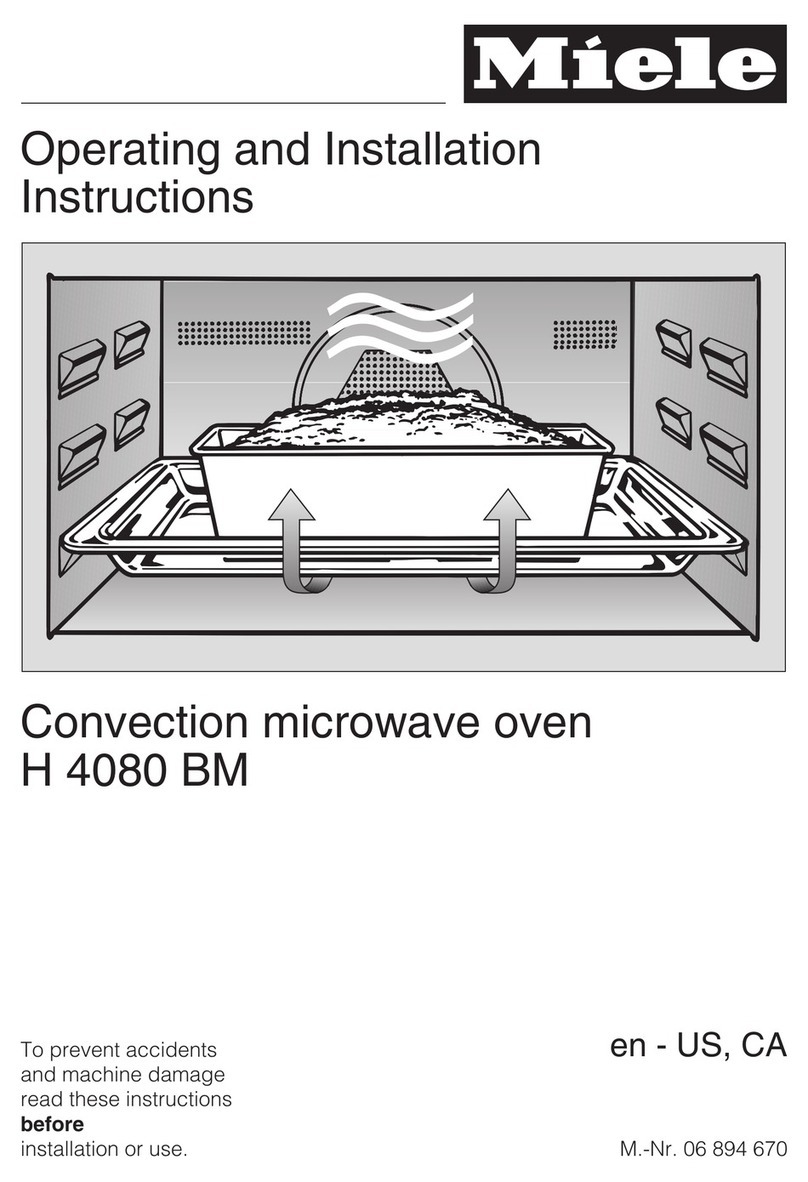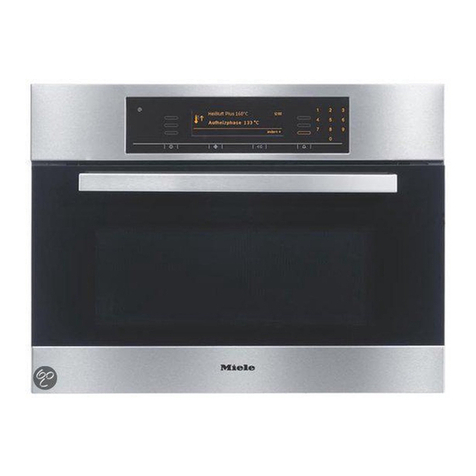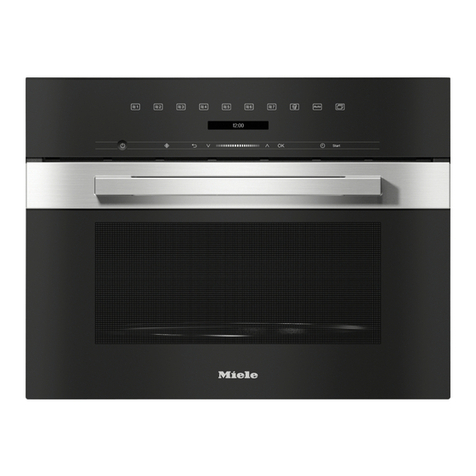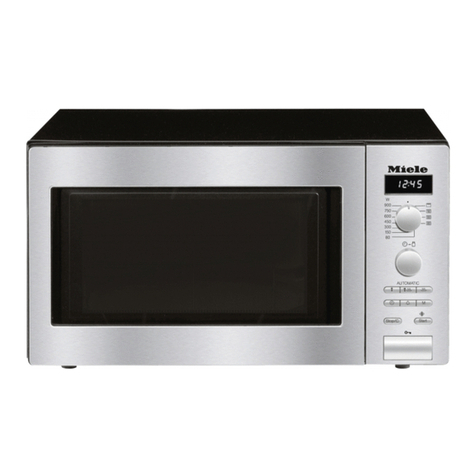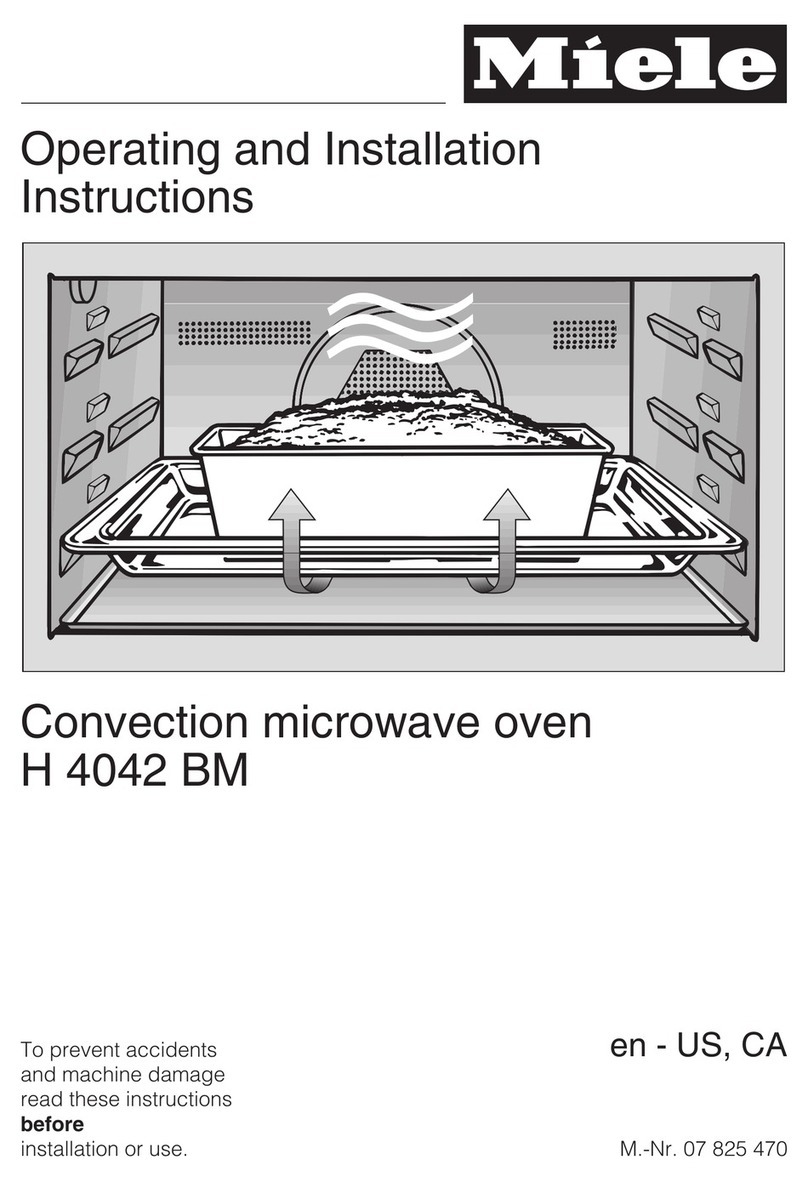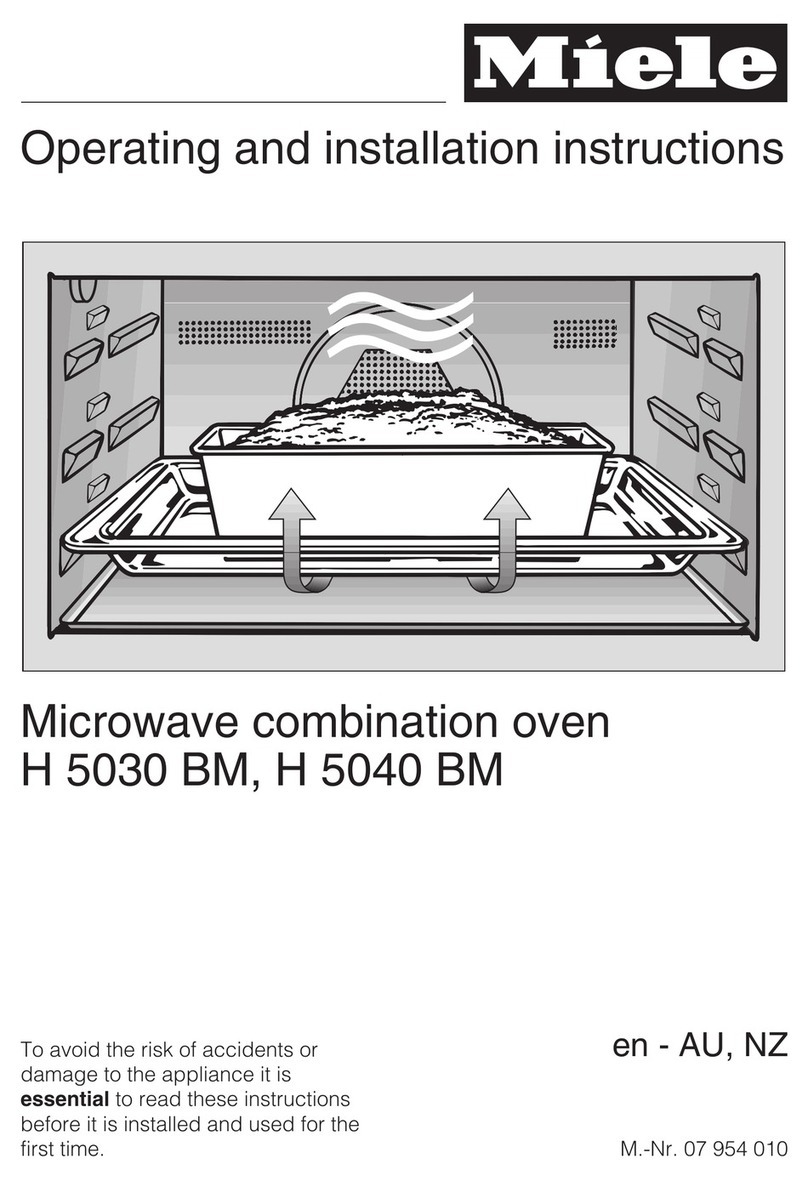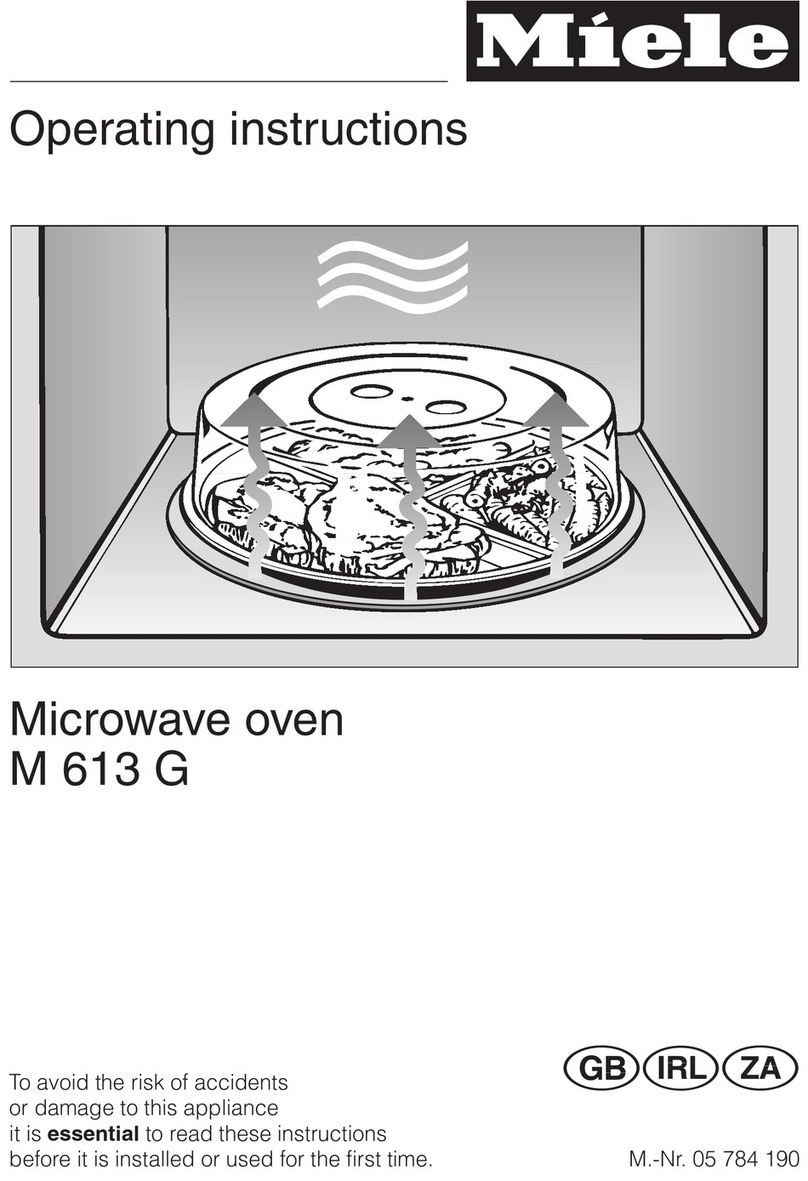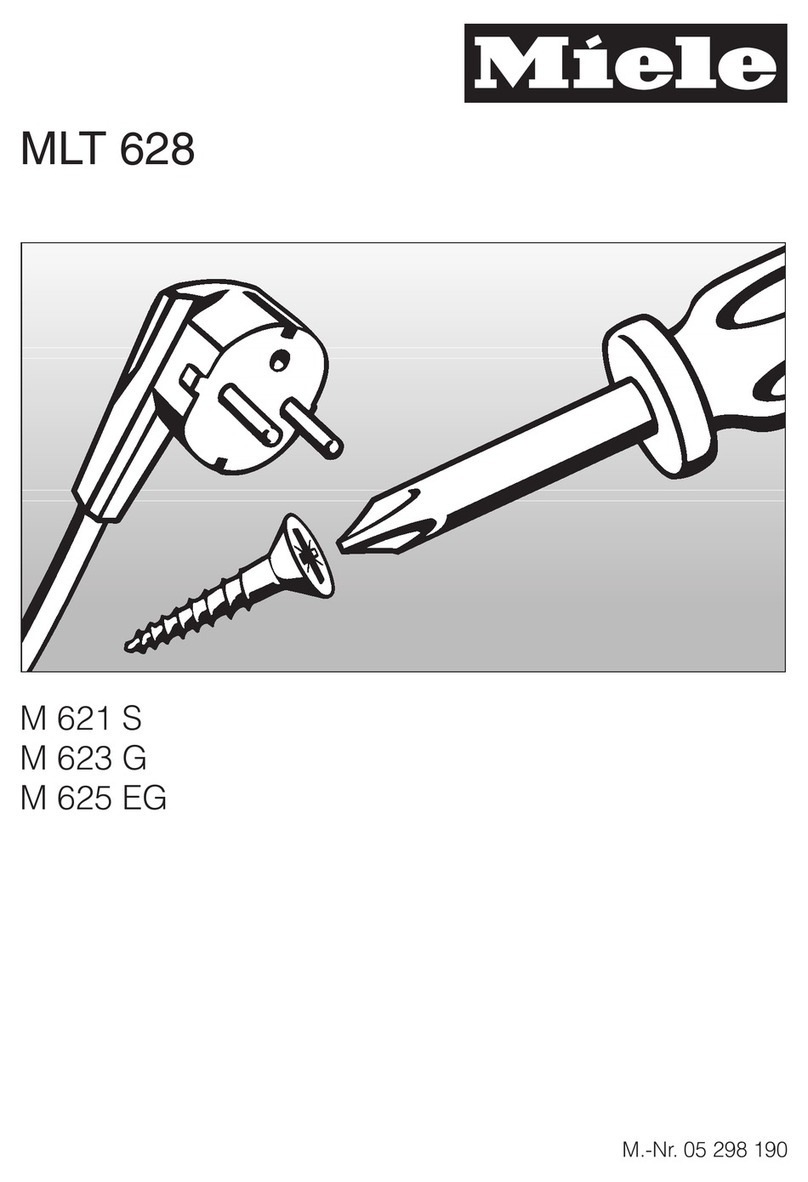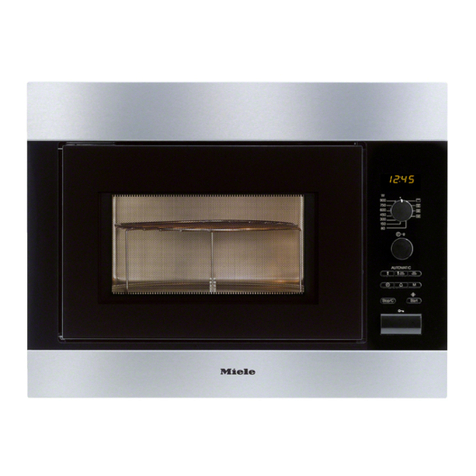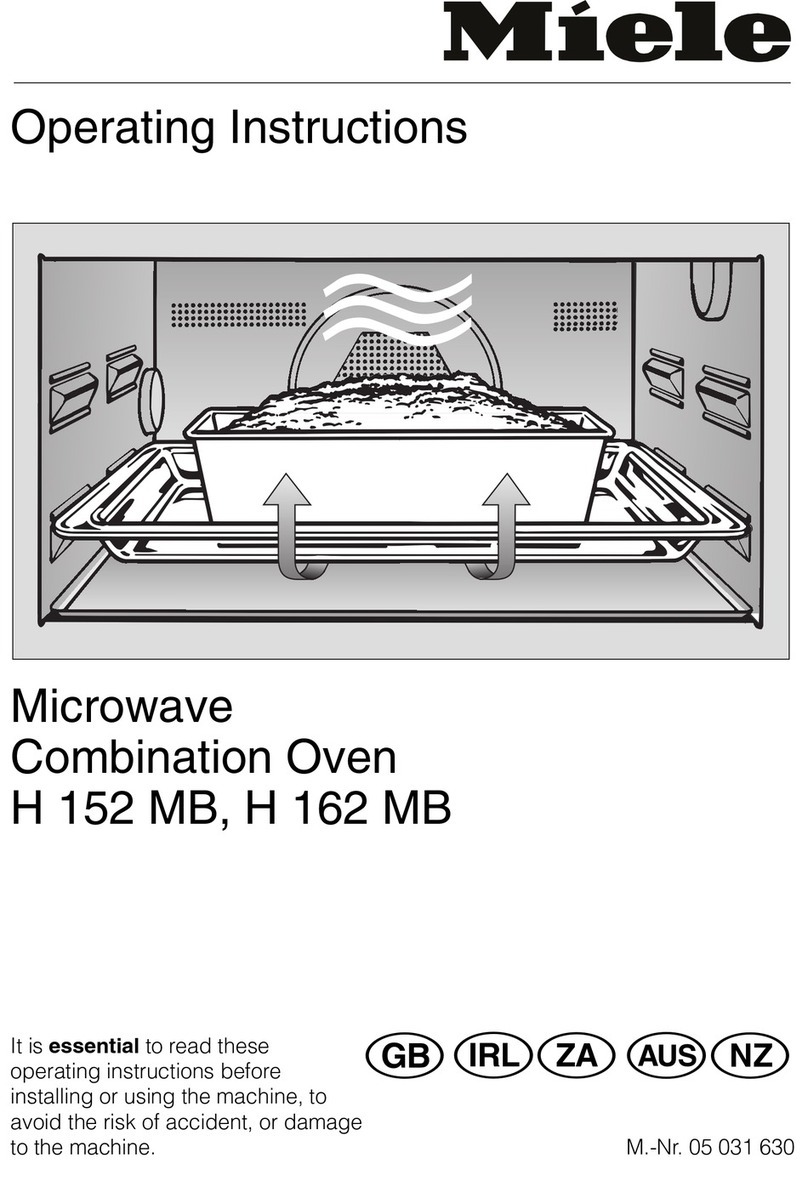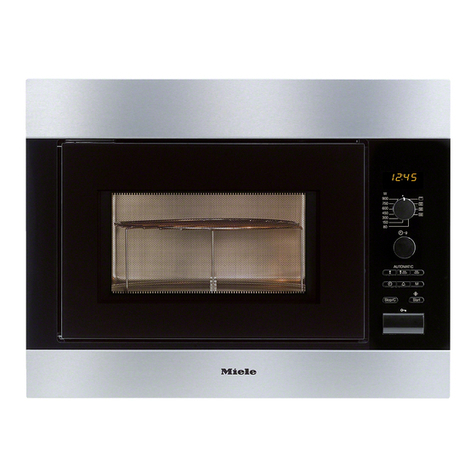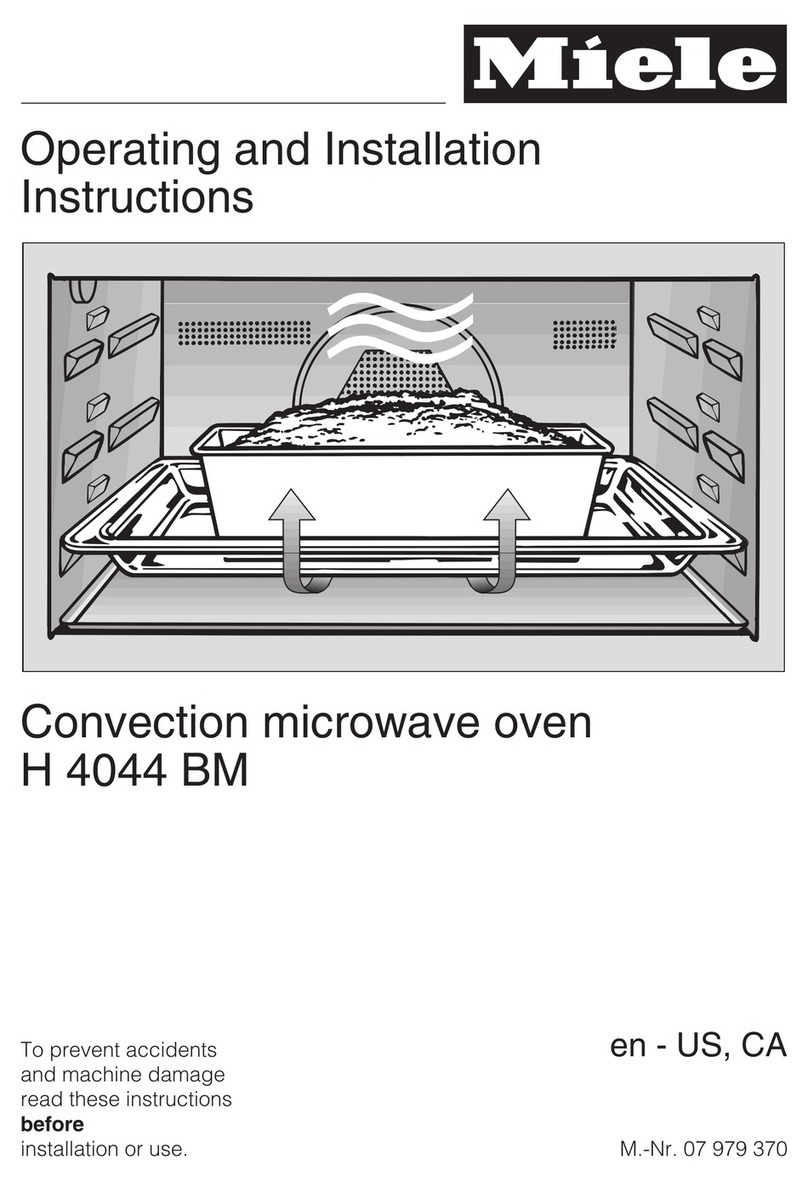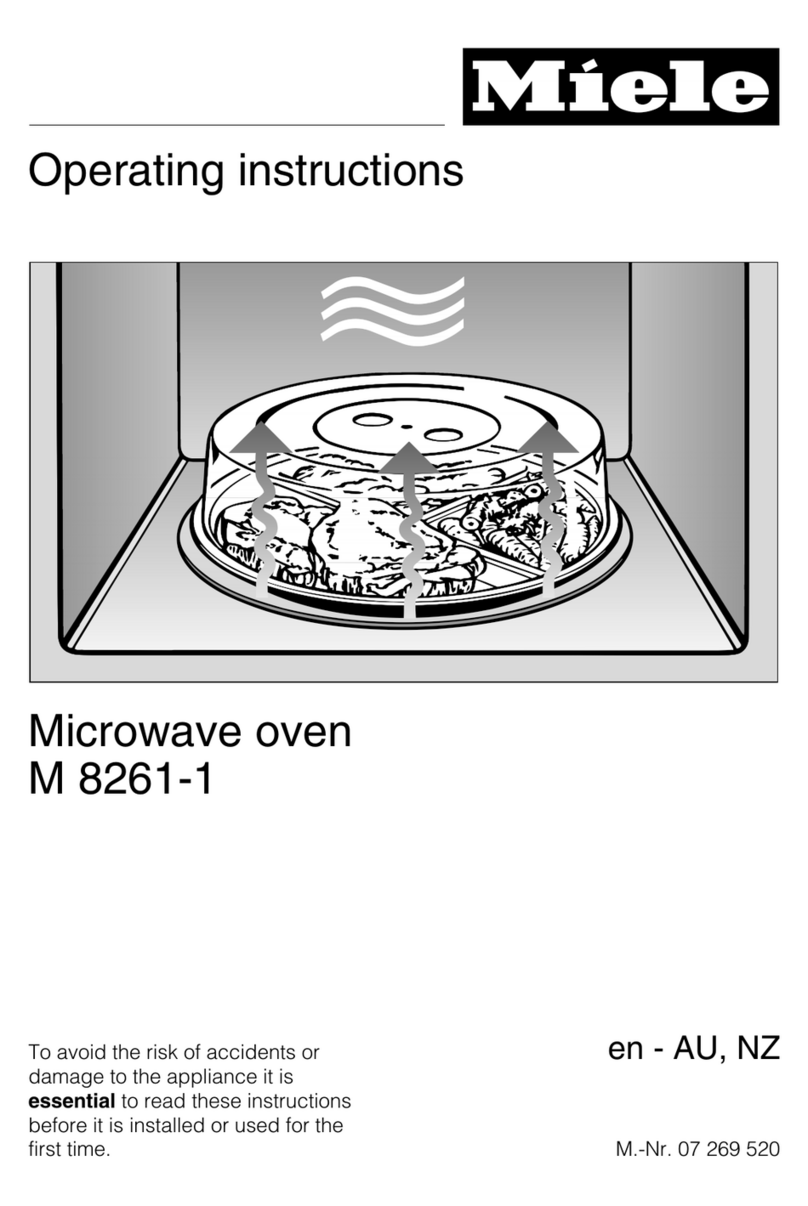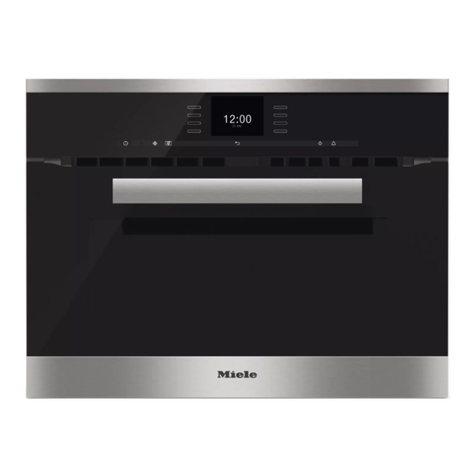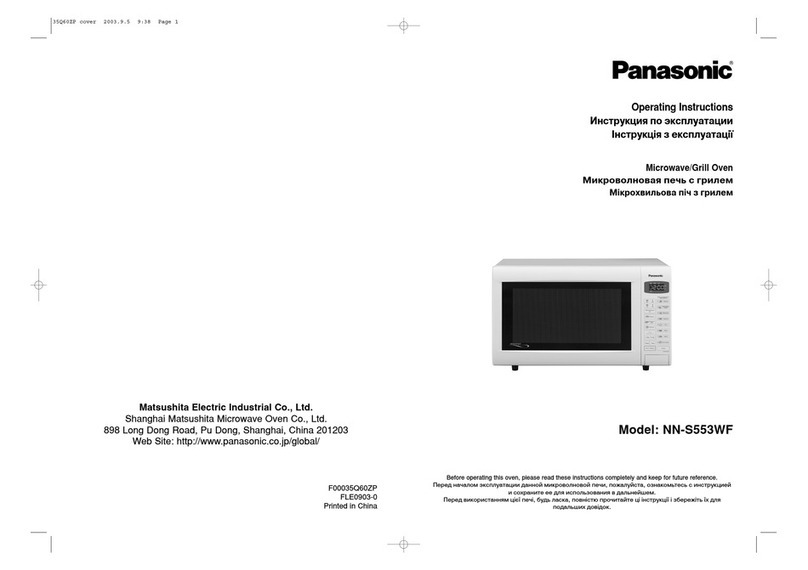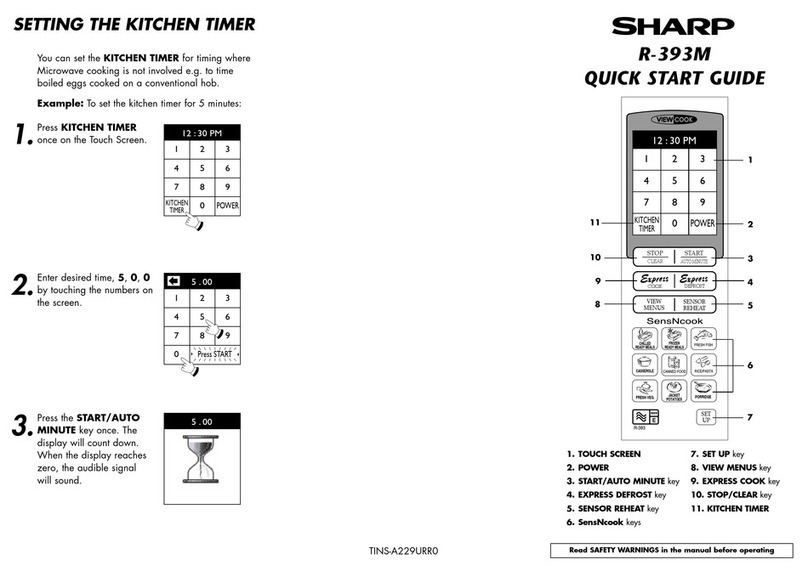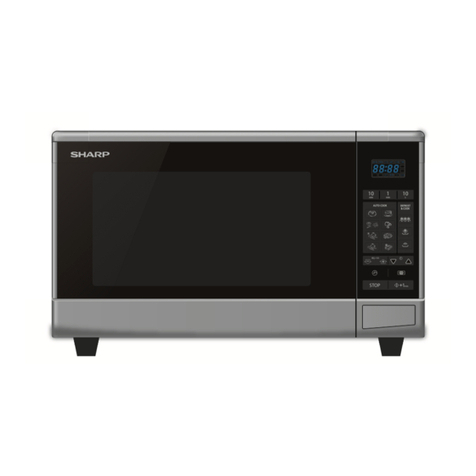Do not use any containers or cut-
lery made from or containing met-
al, aluminium foil, lead crystal glass-
ware, temperature-sensitive plastics,
wooden utensils or cutlery, metal clips
or wire ties. Such items could be dam-
aged, or cause a fire hazard.
The rack supplied with the appliance is
designed to be compatible with micro-
waves, and can therefore be used with
or without the microwave function.
The rack gets hot when operating
either the micwowave function or
the browning element, or both. There is
a danger of burning.
Eggs can only be cooked in their
shells in the microwave oven in a
specially designed egg-boiling device
available from specialist shops. Simi-
larly, hard-boiled eggs should not be re-
heated in the microwave oven as this
may lead to the eggs bursting, even
once they have been removed from the
oven.
Eggs can be cooked without their
shells in the microwave oven only if
the yolk membrane has been punc-
tured several times first. The pressure
could otherwise cause the egg yolk to
explode.
Do not reheat food in the oven in
heat-retaining bags intended for
normal ovens. These heat-retaining
bags usually contain a thin layer of
aluminium foil which reflects micro-
waves. This reflected energy can, in
turn, cause the outer paper covering to
become so hot that it ignites.
Food with a thick skin or peel,
such as tomatoes, sausages,
jacket potatoes, aubergines, should be
pierced or cut in several places to
allow steam to escape and prevent the
food from bursting.
Ovenproof earthenware can retain
a considerable amount of mois-
ture. Earthenware and porcelain con-
tainers with hollow handles and lid
knobs must only be used in this oven if
they have vent holes, which allow the
moisture to escape. Without vent holes
there can be a pressure build-up, caus-
ing the container to crack or shatter,
with the danger of injury.
Traditional oven functions:
Fan Heat, Grill
Caution - Danger of burning
When the oven is being used as a
traditional oven it can get very hot.
Great care should be taken to en-
sure that small children do not
touch the oven when it is being used.
External parts of the oven such as door
glass, handle vents and the facia panel
can become quite hot.
Wearing heat-resistant oven gloves
is recommended when placing
food in the oven, turning it or removing
it. When the Grill function has been
chosen, either solo or in a combination
programme the element becomes very
hot and there is a danger of burning.
Warning and Safety instructions
10



